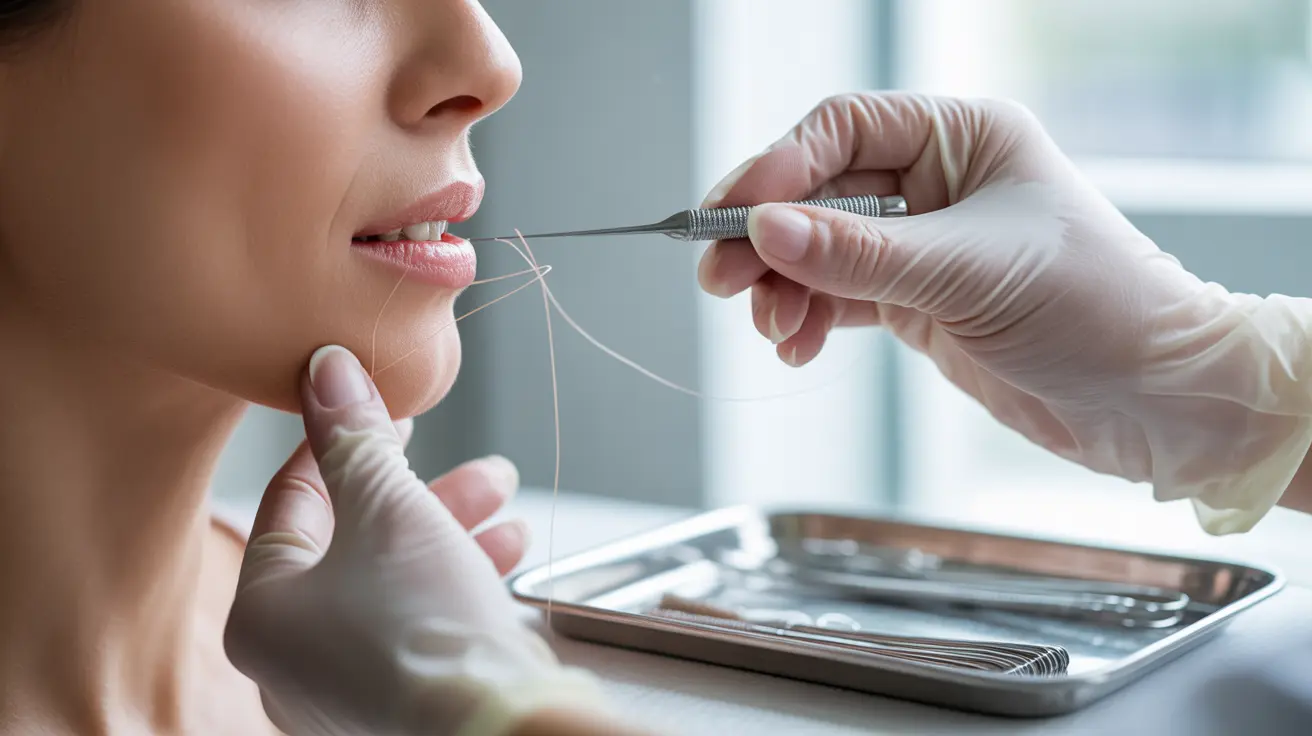Lip threading is an innovative cosmetic procedure that's gaining popularity as an alternative to traditional lip fillers. This minimally invasive treatment uses specialized threads to enhance lip volume and definition while promoting natural collagen production. Understanding the benefits, risks, and expected outcomes of lip threading can help you make an informed decision about this aesthetic procedure.
What Is Lip Threading?
Lip threading involves the strategic placement of dissolvable PDO (polydioxanone) threads beneath the lip's surface to create subtle volume and enhance lip contours. Unlike traditional dermal fillers, this technique works by stimulating the body's natural collagen production while providing immediate structural support to the lip area.
Benefits of Lip Threading vs. Traditional Fillers
The advantages of lip threading extend beyond simple volume enhancement. This procedure offers several unique benefits:
- More natural-looking results
- Gradual enhancement over time
- Minimal risk of migration
- Stimulation of natural collagen production
- Longer-lasting results compared to some traditional fillers
The Lip Threading Procedure
Before the Treatment
Prior to the procedure, patients undergo a consultation to discuss their goals and medical history. The practitioner will evaluate lip anatomy and develop a customized treatment plan.
During the Procedure
The process typically involves:
- Application of topical anesthetic
- Strategic marking of thread insertion points
- Careful placement of PDO threads using fine needles
- Final adjustments to ensure symmetry and desired results
Recovery and Results
Recovery from lip threading is generally straightforward, though patients should expect some initial swelling and potential bruising. Most people can return to normal activities within 24-48 hours, though full results develop over several weeks as collagen production increases.
Timeline for Results
Results typically follow this pattern:
- Immediate: Initial volume enhancement
- 1-2 weeks: Reduction in swelling
- 2-3 months: Peak collagen production
- 6-12 months: Duration of results
Safety Considerations and Potential Risks
While lip threading is generally safe when performed by qualified practitioners, potential risks include:
- Temporary swelling and bruising
- Minor discomfort or tenderness
- Possible asymmetry
- Thread visibility (rare)
- Infection (very rare)
Frequently Asked Questions
What are the benefits of lip threading compared to traditional lip fillers?
Lip threading offers more natural-looking results, longer-lasting enhancement, and stimulates natural collagen production. Unlike fillers, threads provide structural support while reducing the risk of migration or lumping.
How long do the results of lip threading typically last and what is the recovery time?
Results typically last 6-12 months, with some patients experiencing benefits for up to 18 months. Recovery time is usually 24-48 hours for initial swelling to subside, though complete healing may take 1-2 weeks.
What are the common side effects and risks associated with lip threading?
Common side effects include temporary swelling, bruising, and mild discomfort. More serious but rare risks include infection, asymmetry, or thread visibility. Most side effects resolve within two weeks.
Who is a good candidate for lip threading, and when should it be avoided?
Ideal candidates are healthy adults seeking subtle lip enhancement. The procedure should be avoided by pregnant women, those with active oral infections, autoimmune conditions, or blood clotting disorders.
How important is the skill level of the practitioner for the safety and outcome of lip threading?
The practitioner's skill level is crucial for both safety and aesthetic outcomes. Patients should choose board-certified professionals with specific training in lip threading techniques and a proven track record of successful procedures.




